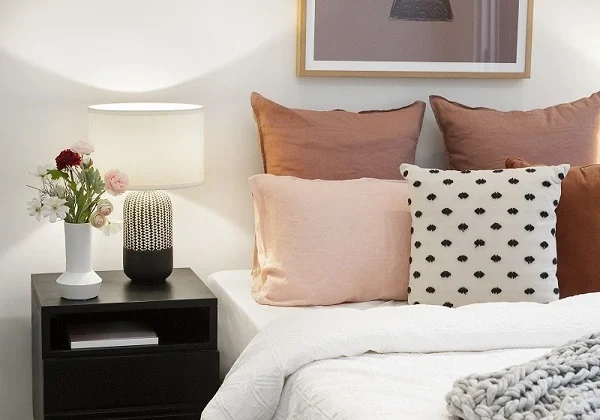How to Choose a Privacy-Centric Home?

Privacy is a luxury today. With the rampant digitalization, we are 24*7 reachable on our handheld devices, our personal lives are trackable and our footprints easily traceable. In such an open world, it is important to have a home that ensures complete privacy and comfort.
In its entirety, entering not just the home, but the project premise should feel like homecoming. A grand entrance separating the outer and inner worlds can help create an experience that is truly private. When you choose a house, make sure that it is private in every sense of the word. Privacy can be very subjective to your lifestyle and ranges across a scale from public, semi-public, private to intimate. Evaluate the Floor Plan and Project Design to gauge the privacy your potential house will offer.
AREA SEGREGATION WITHIN THE HOUSE
As a first check, identify the various areas in the house and demarcate the public, semi-private and private areas. The location of these areas with respect to one another can be really important for a peaceful and private living experience. The public areas in the house include the living and dining rooms, the kitchen and the guests’ room are the semi-private areas, while the bedroom and washroom are the private areas that demand exclusive privacy. The privacy across these areas should increase as you move from the public to the private areas.
BUILDING ARRANGEMENT
Privacy should be an integral part of the Master Plan. The building arrangement should be such that it enhances privacy for the residents and neighbours. The adjacent buildings should not be too close and overlooking into one another. In such cases, most habitable rooms and balconies/terraces can become obsolete due to lack of privacy.
DISTANCE BETWEEN BUILDINGS AND HOUSES
- The distance between the buildings is an important consideration. It should be such that they allow communication, without much visual interference.
- A house that opens on 3 or 4 sides can welcome privacy if it is located away from the neighbouring buildings.
- The distance between two houses on the same floor plan should be checked. Floor plans that are too crammed and inadequately spaced out will have houses that are located too close, hampering privacy.
- Adequate permissible distance should be checked to ensure maximum privacy and satisfactory illumination and ventilation.
SPACE PLANNING AND DESIGN
- The utility area and the kitchen should be located close to each other and separate from the activity areas of the house. For instance, the house helps should directly enter the house and gain access to the kitchen and utility area, without having to cross across the bedrooms and living room. Privacy in this case will be preserved in the private areas of the home.
- The bedrooms if two or more should be located at a distance from one another. With no common wall and an adequate distance between them, the bedrooms guarantee maximum privacy to the occupants. In this case, an extra bedroom can be easily converted into a guest room that offers maximum privacy.
- When the family is enjoying private time in the living room, the TV screen should not be directly visible to the outsiders. Also, the windows and doors should be located such that, even if open, they invite minimum or no glares. The family time should be an engaging experience that is not disturbed by poor design.
- Also, if you wish to convert a particular room into a prayer room, library or home office, it should be located at the distance from the public areas of the house. This would ensure that it invites minimum noise from the other frequently used rooms. Plan today and take a future view on the use of the available space.
- The balconies or terraces should ensure that you are privy to maximum privacy. The design and orientation should let you enjoy the outdoor space at all times, in various ways. Check for the location of the balcony or terrace. It should be positioned such that the balcony is safeguarded effectively from the inquisitive eyes and can be used at all times. Also, the height of the balcony sill is important. It should be low enough to offer great landscape views from the living room, at the same time high enough to ensure maximum safety, privacy and openness.
- Assess your own lifestyle to ascertain your need for privacy. If you are a person who enjoys communicating or watching TV when cooking, a private kitchen might seem like a challenge. In such cases, a non-private kitchen style like a semi-open or open kitchen will be more recommended. Evaluate your lifestyle preferences to ensure you choose a home that offers privacy levels to suit your taste. Because even though open-concept designs may be artistically pleasing and contemporary, they are not always the best ones for every space and each family.
ENTRANCE AND ACCESSIBILITY
- The house should be able to offer a sense of privacy even when all the doors and windows are left open. It should have distinct zone for outsiders i.e., guests and zone for insiders i.e., family members and dwellers. The small details should be taken care of for your and your family’s comfort. In your home, spaces used for guest entertainment should not impinge on the more private areas.
- Ensure that the entrance should be located such that you have an eye on it at maximum times. Whether you are working in the kitchen or relaxing in the living room, you should be able to see the entrance of the house.
- While the visibility from the inside to the outside is important, the opposite should be avoided. For example, anyone at the door shouldn’t be able to directly see inside. The sense of privacy will be lost if the entry and the living room seating or bedroom door is in the direct line of vision.
- An additional foyer space near the entrance, both inside and outside the entrance door, can serve the purposes of greeting visitors or receiving parcels. A dedicated lobby space outside can help ensure that the door doesn’t directly open into the common passage.
Put a premium on privacy when choosing your home. In the long run, privacy inside and around the project can become a boon, making it easy to cut the unwanted noises and welcome the peace. Regardless of the expansive carpet area, the premium materials used, presence of different amenities and extravagances and so on, a home is a place where one should feel safe in a truly private space. Do not put strong walls around you, but insist on safeguarding your precious family and ‘me’ time.



Ask a Question